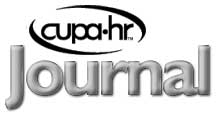 Spring/Summer 2000 - Vol. 51, No. 1 Spring/Summer 2000 - Vol. 51, No. 1
Upgrade It? Replace It? Or Start a Revolution? An Adventure Story from the University of Arkansas
|
| Modules Away! The university started development with a contest to name the project. The winner was BASIS for Business and Administrative Strategic Information Systems. The programmers and application owners became the BASIS team. One of the best decisions that the university made early on was to develop the system in modules and to start with ones that would be relatively simple yet provide much assistance to users in Finance and Administration and in other departments across campus. The General Ledger Interface Module (GJIM) and TRAVEL were two of the first modules to come online. The TRAVEL module allows faculty and staff who are traveling on university business to make all their preliminary arrangements online, submitting electronically the authorization to pay or be reimbursed for conference registration fees, hotel rooms, meals, parking, airfare, and so on. The university’s contract travel agent has access to the system and can be notified that air travel or rental car arrangements have been approved by the traveler’s department. No paper is involved until receipts are submitted for reimbursement. The basic architecture or design is the same for all modules. The user logs on with a computer ID and password that identifies the user’s electronic “desk.” The desk can be accessed from anywhere on campus, and even from remote locations, using dial-up access to the administrative applications network. Access to some types of information is restricted by desk. Hence, the chair of the anthropology department can view leave records for all employees in that department but not for employees in the sociology department, and he or she can review the anthropology department’s budget in detail, but not the chancellor’s budget. Leave administrators in Human Resources can view and modify anyone’s leave use, and the university’s budget director can view any departmental budget. The screens in the modules are all similar in their layout. Keystrokes perform the same function for every module: for example, the PF1 (or F1) key is always a Help key. F3 is always Quit. F7 is always Back/Previous/PageUp and F8 is always Next/Forward/Page Down. F10 is the Save key, and F11 takes you to Options/Comments or other special functions. Once a user has worked with one module, she or he finds it easy to learn to use another because of the familiar options and functions. Another element common to all modules is TARGET, an electronic transaction approval system. Each function of TARGET (Transaction Approval Review Gateway via Electronic Transmission) has a pre-determined TARGET approval chain, and an electronic record is made when each reviewer accesses and approves a transaction. A person who has entered a transaction requiring approval can see whose electronic desk the transaction has reached and how long it has been sitting there. TARGET eliminates transaction delays because a piece of paper has not been passed along to the next reviewer. In addition, it documents the date that a transaction is made and the person that receives the transaction. When a reviewer enters BASIS, the first screen tells her or him that there are a certain number of transactions on her or his electronic desk, waiting to be approved. The reviewer is presented with each transaction and can enter “A” for Approved, “D” for Disapproved, “H” for Hold pending further information, or “I” for Invalid at the time of review. The reviewer then presses F10 for “Save,” and the transaction is approved or is forwarded to the next reviewer’s desk, depending on the TARGET review chain. The BASIS team carefully minimized the length of any review chain, eliminating reviewers who need only information and supplying them with that information through access to electronic lists, reports, drill-downs, or view-only screens. |
Leave entered by a department is sent out electronically to the individual record for each employee. Leave accruals are automatically added to the record each month. Even though annual leave accrual varies among employees according to their years of service, the system records the correct number of hours per month. LEAVE is programmed to reflect the university’s policy that sick leave be exhausted before comp time or annual leave is used if the employee is absent because of illness, but it “knows” that maternity leave is exempted from this policy (employees can use annual leave before exhausting all of their sick leave). LEAVE also “knows” that employees who are using leave from the catastrophic leave bank program do not accrue additional leave, even though they continue to be paid. It distinguishes between job-injury leave that is compensated through Workers’ Compensation and job-injury leave that is ineligible for compensation. The hourly time-sheets module records time worked by hourly employees, including work-study students, again eliminating paper transmittals to payroll staff. HRLY-TS restricts the hourly pay rate, requiring departments to enter a wage rate that falls within a range allowed for the employee’s job title. HRLY-TS permits departments to pay employees by the job, rather than by the hour, when doing so is appropriate, through a function called unit pay. The department provides a comment online that explains and justifies the unit pay, and Human Resources reviews that comment before the pay is approved. Other, later, HR-related modules include LABOR, for labor distribution among cost centers; PSB, which stands for Position System/Budget and which helps maintain the university’s state-required position control system; and, of course, PAYROLL and BENEFITS. Some elements that currently reside in these modules, such as DIRM, the directory maintenance system that is now in LEAVE, and EI or employee information, which is now in PAYROLL, will soon be moved to the PERSONNEL module. Because this module is not as Y2K-sensitive as PAYROLL or BENEFITS, it is the last to be developed.
|